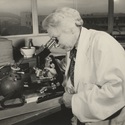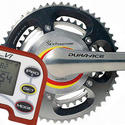Use this timeline to find out some highlights in the progression of flight in human history.
1000 BCE – First kites
Kites are invented in China.
852 BCE – A king tries to fly
The English King Bladud is apparently killed attempting to fly.
1485–1500 – da Vinci designs planes
Leonardo da Vinci designs flying machines.
1709 – Model glider design
Bartolomeu Laurenço de Gusmao designs a model glider.
1783 – Hot air balloon flight
The first untethered manned hot air balloon flight was on 21 November 1783 in Paris, France in a balloon created by the Montgolfier brothers.
1843 – Biplane design
George Cayley’s biplane design is published.
1895 – Biplane gliders
Otto Lilienthal flies biplane gliders.
1903 – First powered flight
Orville and Wilbur Wright make the first recorded powered, sustained and controlled flight in a heavier-than-air flying machine.
1904 – First powered flight in New Zealand
Richard Pearse from New Zealand makes his first recorded powered flight of more than a few seconds, though witnesses contend his first flight may have been just before the Wright brothers.
1906 – First powered flight in Europe
Alberto Santos-Dumont makes the first successful powered flight in Europe.
1911 – New Zealander launches glider
Kiwi aviator George Bolt’s flying career began in the South Island in 1911. Aged just 18, he launched a glider that he had designed and built himself from the Cashmere Hills above Christchurch. In 1911 Bolt took New Zealand’s first aerial photographs. In 1916 he began work as an apprentice mechanic at the Walsh brothers’ New Zealand Flying School in Auckland.
1919 – First non-stop trans-Atlantic flight
British aviators John Alcock and Arthur Brown make the first non-stop trans-Atlantic flight – flying from Newfoundland to Ireland. They were presented with a prize of £10,000 and knighted a week later. It was also the first trans-Atlantic airmail flight.
1921 – A pilot licence first
Bessie Coleman became the first African-American to gain a pilot’s license.
1927 – First solo trans-Atlantic flight
Charles Lindbergh completes the first solo non-stop trans-Atlantic flight.
1930 – Jet engine invented
British inventor Frank Whittle invents the jet engine.
1932 – First woman flies across Atlantic
Amelia Earhart is the first woman to fly a solo non-stop trans-Atlantic flight.
1932–1937 – Record-breaking flights
New Zealander Jean Batten makes record-breaking flights around the world.
1939 – First jet-propelled aircraft
Germany’s Heinkel 178 is the first fully jet-propelled aircraft to fly.
1940s – Aerial agriculture developed in New Zealand
Seed sowing, top dressing and crop dusting are developed in New Zealand with ex-WW2 pilots and planes. Ossie James, in particular, is noted for his role in this.
1947 – Aircraft exceeds speed of sound
Charles Yeager pilots the first aircraft to exceed the speed of sound in level flight.
1969 – First supersonic transport flight
First flights of supersonic transport – Soviet TU-144 and Anglo-French Concorde.
1970 – First Boeing 747 commercial flight
Boeing 747 makes the first commercial flight.
1976 – Concorde passengers
Concorde begins its first passenger-carrying service.
1979 – Longest human-powered flight
Bryan Allen pedals the Gossamer Albatross across the English Channel, breaking the distance record for human-powered flight.
1986 – First non-stop flight around world
Dick Rutan and Jeana Yeager fly the US ultralight Voyager around the world in a 9-day non-stop flight from California to California.
2005–2006 – First non-stop world solo flights
Steve Fossett makes the first non-stop solo flight around the world (2005) and in 2006 lands in England after flying around the world once and crossing the Atlantic twice – a distance of 26,389.3 miles (42,469.46 kilometres).
2009 – New glider record
New Zealand pilot Terry Delore breaks the world gliding record by 100 kilometres, travelling a total of 2,400 kilometres within New Zealand.
2011 – Martin jetpack
In an unmanned test, the Martin jetpack reaches an altitude of 5,000 feet (1,524 metres). The jetpack, invented by New Zealander, Glenn Martin, is a small flying device for one person. It was named one of the world’s top 10 inventions in 2010.
2011 – World’s first flying car
The Transition® by Terrafugia is a roadable aircraft – an aeroplane that can take off and land at any airport and, with the push of a button, fold up its wings and drive down the road.
2016 – Solar flight around the world
Solar Impulse 2 is the first plane powered by a renewable energy source to tour the globe. The Solar Impulse website has further information.
2019 – Electric aircraft
In December the world’s first fully-electric aircraft for commercial flight completed a test in Canada.
2021 – New Zealand's first electric flight
On 1 November 2021 Gary Freedman flew New Zealand's only electric plane, (just one of around 30 in the world), from Blenheim to Welllington, see this Kea Kids news story on Stuff.
2023 December – New Zealand's first commercial electric plane
Air New Zealand announces it has ordered one Alia aircraft, a small commercial electric plane. It is set to start flying cargo between Wellington and Marlborough in 2026.
Find out more
Read the article People in flight history for more detailed information about some of the people featured above.











